
The good quality of the shadow-pathes makes it interesting to get more information about the asteroid. First I tried to get the middle diameter.
With Photoshop a histogram of the Metis shadow was compared with a histogram of a circle.
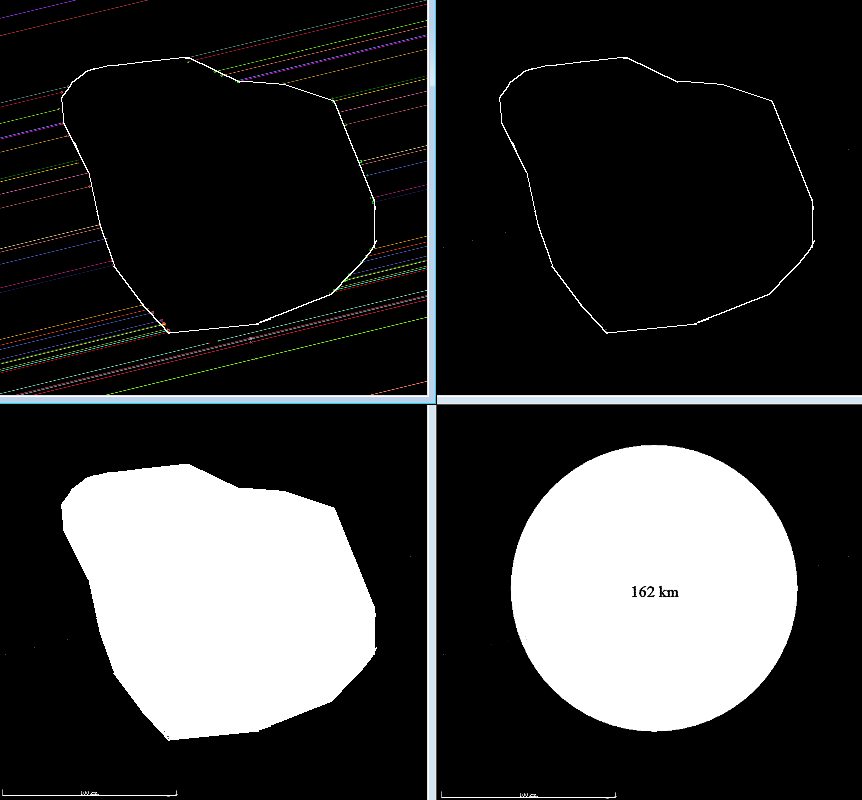
The result was a diameter of 162km.
The official mean diameter is 190km, but the diameter depends on the rotation.
It is possible to say that weīve looked on a position near the minor axis.
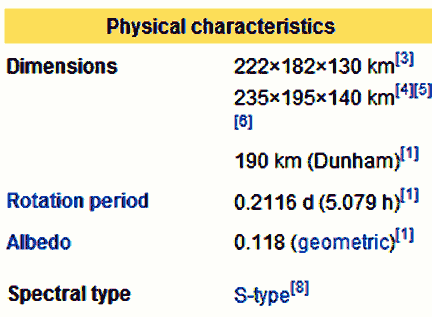
The rotation period is 5.079 hours. 33 rotations later a light curve was made with a 200mm teleobjective. The position was in the centre of Munich. A red-filter was used to reduce the city-light.
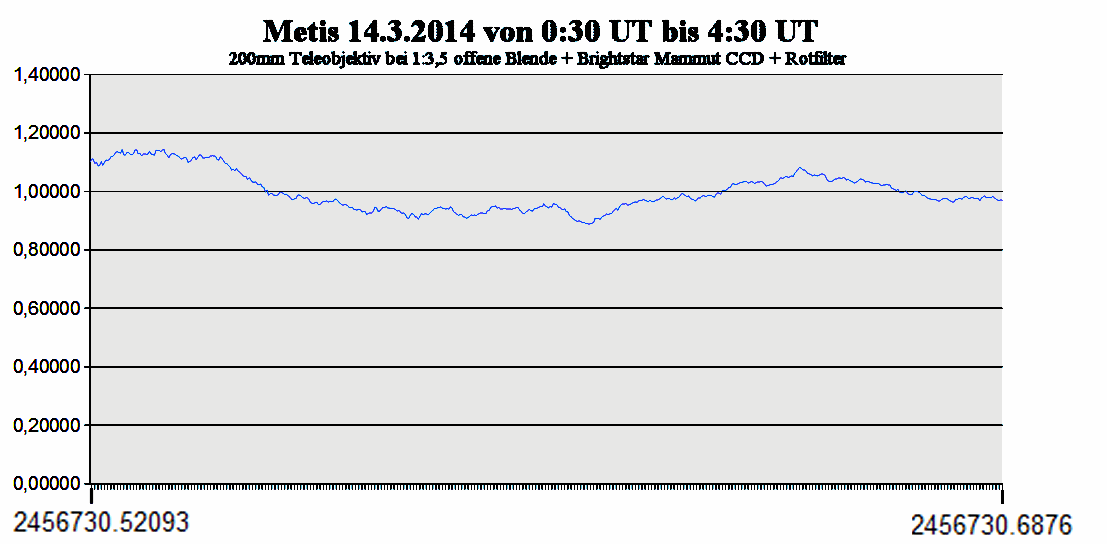
As expected the time of the eclipse was near the minimum of the light curve.
The brightness was measured with 10,7mag.
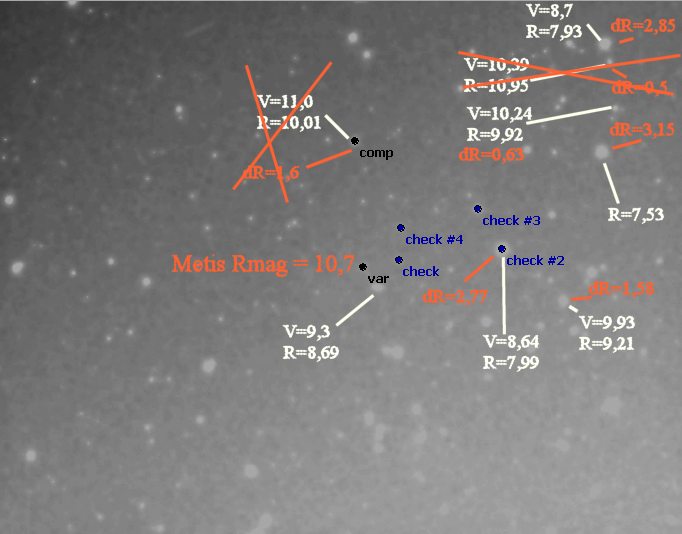
With the diameter and the brightness it was possible to calculate the albedo.
The Horizons-Tool at the JPL delivers the information which is needed to get the absolute brightness (H0).
Distance Metis-Sun: 2.6104 AU
Distance Metis-Earth: 2.1675 AU
The absolute brightness is the brightness at 1 astronomical-unit distance from the sun.
H0 wird berechnet, indem die Entfernungen des Asteroiden zur Erde und zur Sonne quadriert und miteinander multipliziert werden.
The factor is 32,01 or 3,8mag. 33 rotations ago Metis had a brightness of 10.8mag. 10,8 - 3,8 is a H0 von 7 mag.
At http://www.physics.sfasu.edu/astro/asteroids/sizemagnitude.html is a tool which allows to calculate the albedo from the diameter and the brightness. The result is 0,1067.
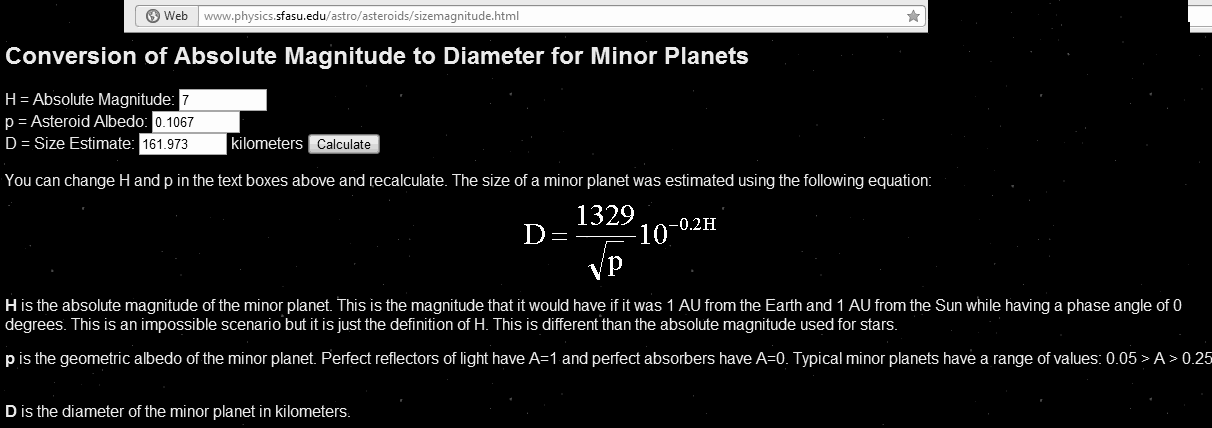
10,67% is less than the official value of 11,8%

10,67% is the Albedo in red. The visual Albedo needs a correction. In the red light the minor planet is 20% brighter than in the visual light.
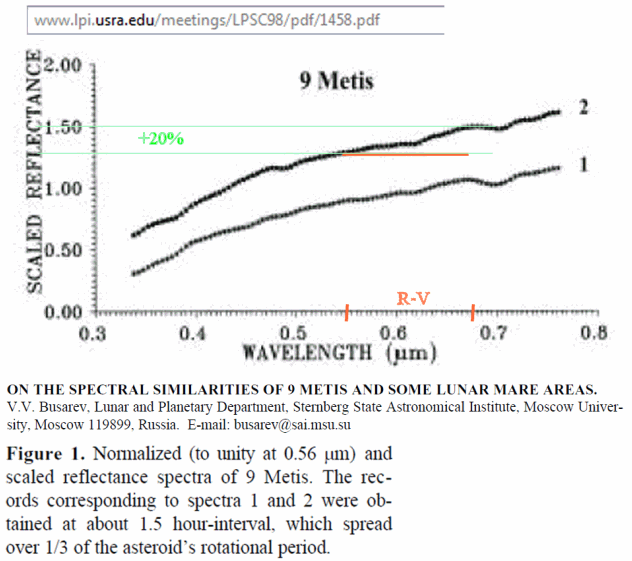
The measured albedo is only 8,9%

8,9% is 25% less than 11,8%. Thatīs an unexpected high value.
Maybe the planetoid shows a dark side at the 7. of March or the phase was was a reason.
An influence of the phase looks sensefull because Metis was at the measurement in a position near the Scorpion.


The next idea was to learn something about the other axis from the light curve. If the eclipse is in the minimum, and the brightness change by 20%, the mayor-axis should be 20% longer. But itīs not so simple. During the last 60 years many lightcurves were made and show very different results.
Many light-curves are here:
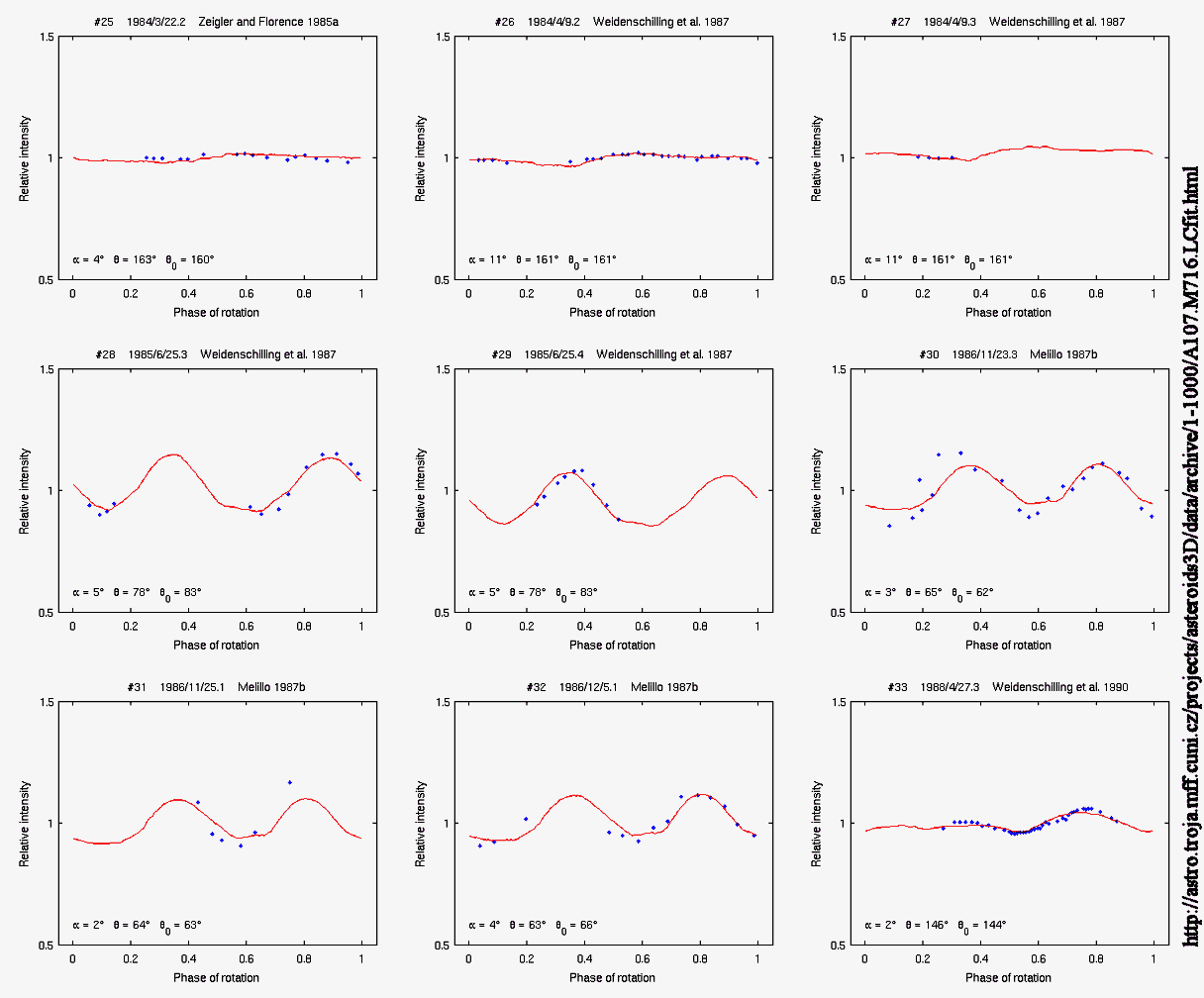
Sometimes the amplitude declines to zero. The inclination to the ecliptic is only 5,57°. The curves are plausible for a potato with a rotation-axis near the ecliptic. Similar to Uranus.

